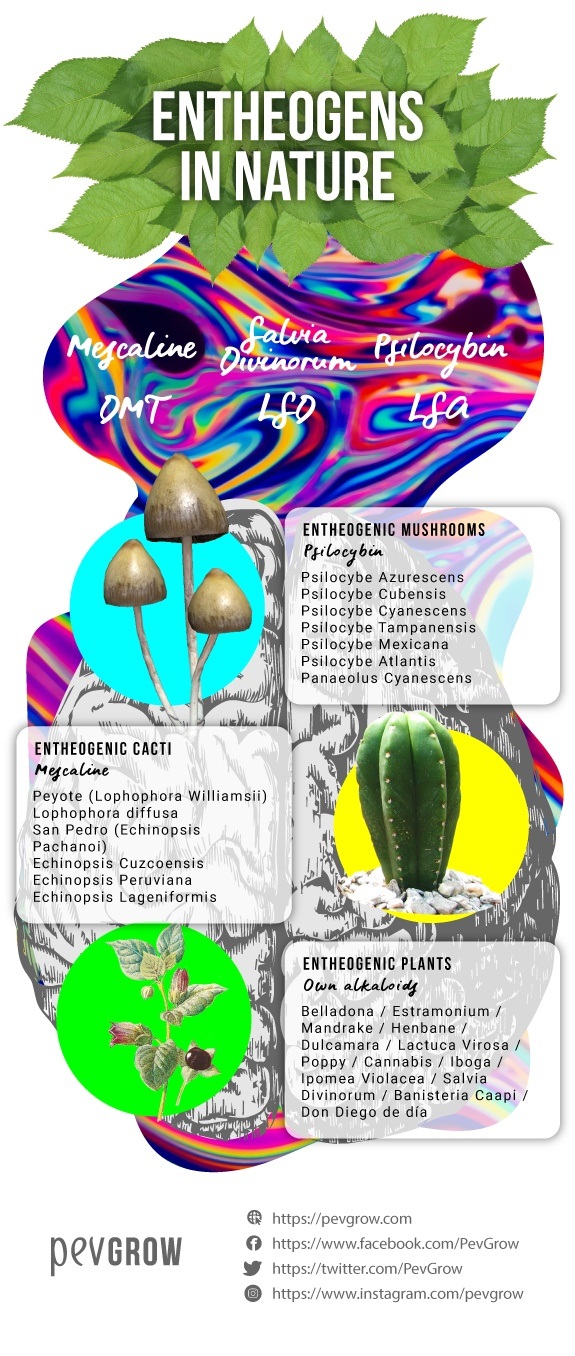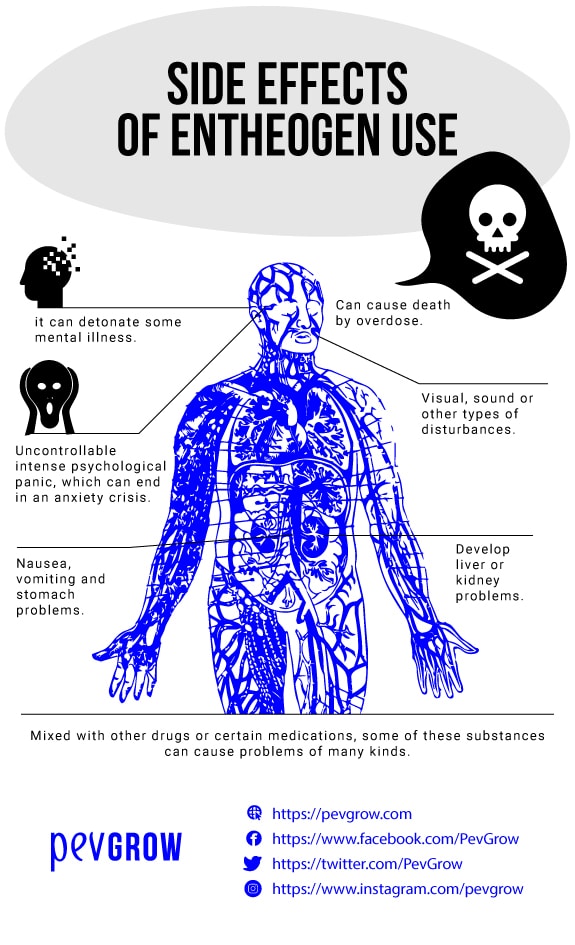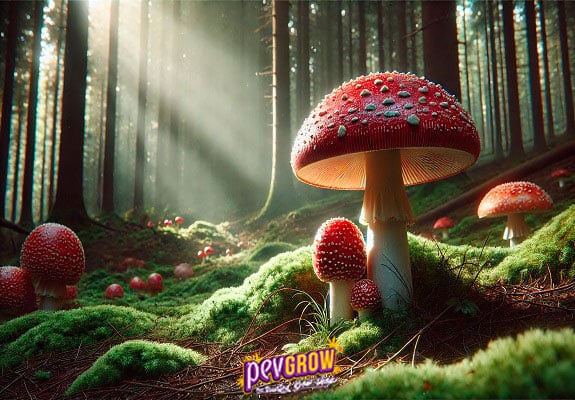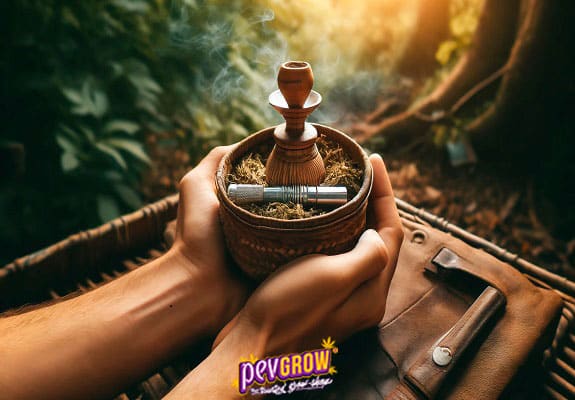

23-10-2020 10:00:03 - Updated: 23 October, 2020
Entheogens are part of human culture, a necessary tool to know ourselves better, to find out where we come from or to understand our mission in life. There are many ways to call this kind of drug: psychotropic, hallucinogenic, psychedelic or psychic, and they all refer to the same thing. Do you want to know a little more about these very special substances? If you keep reading in a matter of minutes you will know everything you need to know…😜😜👉
⚠️ What are entheogens?
According to the dictionary, the meaning of entheogens is substances that possess hallucinogenic power and provide divine experiences to those who use them. If we analyze the word we can observe that “entheos” comes from the Greek and means “With God inside” (God inside to be more exact) and “geno” which can be translated as “origin, principle or birth”, although it can be applied as “to help or to become”. So it can be said that the word entheogen means to help communicate internally with the gods.
Understanding it from our modern and western point of view, we can say that entheogens are substances that have the capacity to alter the mind or consciousness. In ancient times these substances were used for different purposes, such as predicting the future, curing diseases or even in a playful way as is usually done nowadays.

👾 Types of entheogens discovered in nature
There are entheogenic substances that come from many sources, plants, fungi and even animals. There are many species that contain alkaloids or other molecules with these powers, and the most common are the following ones:
- Mescaline
- Psilocybin
- DMT
- LSD
- Salvia Divinorum
- LSA
Entheogenic mushrooms
Within mushrooms with psychedelic powers we have to separate 3 types, being the Monguis or Psilocybes the most important ones, since they contain mainly psilocin and psilocybin, 2 substances very appreciated by psychonauts. There are many varieties within this group of mushrooms, spread throughout the world, and some even produce truffles or sclerotia that also contain the active ingredient. Here you can see a list of the main mushrooms with entheogenic effects:
- Psilocybe Azurescens
- Psilocybe Cubensis
- Psilocybe Cyanescens
- Psilocybe Tampanensis
- Psilocybe Mexicana
- Psilocybe Atlantis
- Panaeolus Cyanescens
Another well-known type of hallucinogenic mushroom is the Amanita Muscaria, the typical mushroom with a red hat and white dots, that of Super Mario Bros. This mushroom is quite dangerous if it is not used properly. It contains muscarine, ibotenic acid and muscimol, but I don’t recommend you to try it because of its deadly potential.
And another fungus less known, but very important as a precursor of entheogenic substances is Ergot, which acts as a parasite in some plants. An example of these is the Ergot of rye, an essential element to produce LSD.
🎯 Entheogenic cacti
Another important group of natural entheogens are some types of cactus plants, especially because of their importance in the development of some cultures. As with hallucinogenic mushrooms, within cacti there are also different varieties with entheogenic powers, although in this case the most important psychoactive active principle is the same, mescaline. Below you can see a list of the most important entheogenic cacti in the world:
- Peyote (Lophophora Williamsii)
- Lophophora diffusa
- San Pedro (Echinopsis Pachanoi)
- Echinopsis Cuzcoensis
- Echinopsis Peruviana
- Echinopsis Lageniformis
🔥 Entheogenic plants on the planet
There are many other species of plants that produce powerful psychoactive effects, especially from the Solanaceae family. The curious thing is that some share certain types of alkaloids, but many have their own, which are not found in any other species discovered so far on our planet.
These plants were widely used in some ancient European cultures, such as Celtic, and in many sacred rituals, until the Inquisition forbade their consumption and the church has maintained this ban to this day.
More powerful Solanaceae, a real poison if not well dosed
- Belladona
- Estramonium
- Mandrake
- Henbane
- Dulcamara
- Lactuca Virosa
Other plants with entheogenic effects
- Poppy
- Cannabis
- Iboga
- Ipomea Violacea
- Salvia Divinorum
- Banisteria Caapi
- Don Diego de día
✅ Effects of entheogens
Some psychotropics have the ability to release greater amounts of dopamine or serotonin into the brain. Others act on the reuptake of the receptors of these substances, and some like LSD directly are molecules very similar to that of serotonin, so they are very easy to adhere to.
Normally these drugs eliminate our ego, or rather they clean or reset the filter that we are creating throughout our lives, that which we strengthen with prejudice daily, many times dragged by the morality that the system inculcates in us. Modifying the usual way of thinking, memories or the ego itself can be very beneficial, it’s like seeing things from a different point of view, surely with a greater reality load than the one we usually perceive in our daily life.
In the illustration below we can see how a normal brain that has been given a placebo acts, compared to one under the effects of LSD. In it we can see how enteogens modify the brain activity, causing a greater interneuronal communication in people who have used these alkaloids.

Side effects of entheogen use
These substances are not harmless, some can even cause death by overdose, or other causes related to its effects, so you must have much respect and be well informed before consumption. Among the most common side or undesirable effects are the following ones:
- In pre-psychotic people it can trigger or detonate some temporary or chronic mental illness.
- Regular users may develop liver or kidney problems, just as a single excessive intake could cause them.
- Bad trip, uncontrollable intense psychological panic, which can end in an anxiety crisis with hospital admission included.
- Some people may develop visual, sound or other types of disturbances, which may be temporary or permanent.
- Nausea, vomiting and stomach problems are quite common after taking some of these substances, caused by intoxication.
- Mixed with other drugs or certain medications, some of these substances can cause problems of many kinds.

🚀 Entheogens in human development
Did you know that the great ethnobotanist and philosopher Terence McKenna wrote a theory proposing that the missing link in the evolution of the human race was a doped monkey? It sounds strange, but among the primate ancestors of our race there is a big gap in the size of the brain that experts are not able to explain. McKenna thinks that it could have been due to entheogenic causes, that some of these primates accidentally or intentionally ate some magic mushrooms and the effect could encourage them to repeat and invite others of their species. And of course, not for a few, but many for centuries or millennia, it is possible that by amplifying the mind and consciousness, they could also increase the brain size of our ancestors.
If we go back only a century, we can see how some entheogens have changed aspects of the culture. Music, literature or painting have been greatly influenced by these substances during this time. In this case it has been more the LSD, the cannabis and the MDMA the 3 drugs that have had the deepest impact on the Beat, Hippie, Punk, Hip Hop, Skate, Rasta generations, etc.
👌 Here’s how some entheogens helped science
Francis Crick was a British neuroscientist and molecular biologist who discovered the structure of the DNA molecule in 1953. Crick confessed years later that during his discovery he was experimenting with LSD and, not only that, that it was a very common practice among Cambridge academics.
Steve Jobs has revolutionized the way we live and communicate over the last few years. We don’t know to what extent LSD influenced his work, but a few years ago he published that it had been one of the 2 or 3 most important things in his life.
Carl Sagan was a great astrophysicist, cosmologist and astronomer that, besides working in great theories on the universe, also published with the pseudonym of Mr X, an essay in which it spoke on the benefits of the cannabis, that was included in the book “Marihuana reconsidered” from 1971.
These are just a few examples of how some entheogens have helped to evolve some scientific aspects, but there are many more. Nowadays, microdoses of LSD or psilocybin are being widely used by many workers in Silicon Valley, where a significant part of the most interesting current inventions come from.
✨ Conclusion
The relationship between people and entheogens is indivisible, otherwise we would not have an endocannabinoid system, nor would the pineal gland produce DMT, among other things. But it is also true that their use cannot be taken lightly, they must be handled with the proper respect they require, and they are not for everyone. On that basis, the best thing is to be thoroughly informed as I said before, and that’s the purpose of this article, which I hope you liked and you share it on your social networks.😜👉👍




